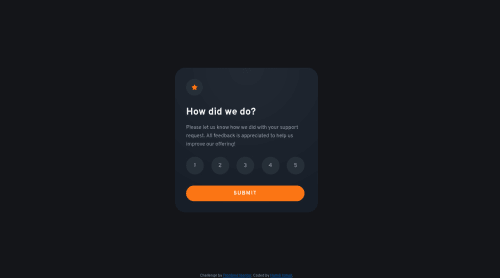interactive rating component

Solution retrospective
First challenge with a little bit of JavaScript. Feel free to give me feed back on how to improve my code or if I over complicated some parts of code, how to write it more efficiently.
thanks
Please log in to post a comment
Log in with GitHubCommunity feedback
- Account deleted
Hey there! 👋 Here are some suggestions to help improve your code:
- Best practice, before moving on to the next challenge, always check your FEM report, to see what is incorrect and update your code with it so that you would not make the same mistake over again. This something that should be done right after submitting your challenge.
- For improved accessibility 📈 for your content, it is best practice to use
remfor yourfont-sizeand other property value. Whileemis best formedia-queries. Using these units gives users the ability to scale elements up and down, relative to a set value.
- Your CSS Reset is extremely bare and being underutilized. To fully maximize your CSS reset, you want to add more to it.
Here are few CSS Resets that you can look at and use to create your own or just copy and paste one that is already prebuilt.
- To ensure that the "rating buttons" are fully accessible, they need to be built using a
formand inside of it, there should be fiveinput radiosand eachinputshould have alabelattached to it to make the buttons accessible. Finally wrap all theinputsandlabelsinside afieldsetto prevent users from making more than one selection.
More Info:📚
MDN <fieldset>: The Field Set element
- The “icons/illustrations” in this component serve no other purpose than to be decorative; Their
alt tagshould be left blank and have anaria-hidden=“true”to hide them from assistive technology.
More Info:📚
https://www.w3.org/WAI/tutorials/images/
If you have any questions or need further clarification, feel free to reach out to me.
Happy Coding!🎄🎁
Marked as helpful
Join our Discord community
Join thousands of Frontend Mentor community members taking the challenges, sharing resources, helping each other, and chatting about all things front-end!
Join our Discord